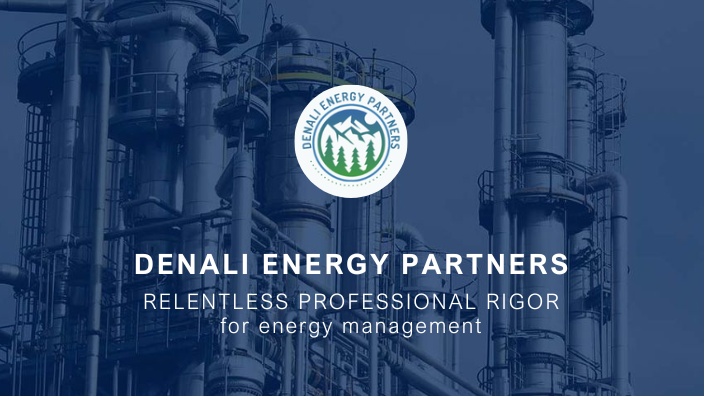Adapting SMEs to Market Changes – Key Strategies for Success
Denali-ep
| 24 de octubre de 2024
Adapting SMEs to Market Changes – Key Strategies for Success
Introduction
In the energy sector and industrial parks, operational costs play a crucial role in determining the competitiveness of companies. As costs rise, businesses find it harder to remain competitive. This article explores the factors contributing to increased operational costs and how they affect competitiveness in the energy sector.
Understanding Operational Costs in the Energy Sector
Definition of Operational Costs
Operational costs refer to all expenses required for the day-to-day operations of a company. In the energy sector, these include the cost of energy itself, as well as expenses related to maintenance, repairs, and regulatory compliance. While these costs are inevitable, efficient management is essential to maintaining profitability.
Importance of Competitiveness
Competitiveness is the ability of a company to offer products or services that are more attractive than those of its competitors. In the energy sector, competitiveness largely depends on the ability to keep operational costs low without sacrificing quality or service.
Factors That Increase Operational Costs
Energy Costs
Energy expenses are among the largest operational costs for companies in the energy sector. Fluctuations in oil, gas, and electricity prices can cause costs to spike, directly affecting a company’s profitability.
Maintenance and Infrastructure Repairs
Energy infrastructures, such as power plants and distribution networks, require constant maintenance. Unplanned repairs can lead to significant expenses, driving up operational costs.
Labor Costs
Salaries, benefits, and other employee-related expenses are also a major source of costs. In particular, hiring and retaining specialized personnel in the highly technical energy sector can be expensive.
Regulatory Compliance
The energy sector is heavily regulated, and complying with these regulations can be costly. From environmental guidelines to safety requirements, companies must invest in technology and processes to ensure compliance, which increases operational expenses.

Impact of Energy Price Volatility
Effects on Company Budgets
Energy price volatility can wreak havoc on company budgets. A sudden increase in prices may force companies to adjust their budgets, cutting costs in critical areas or seeking alternative financing sources.
Long-Term Implications
In the long term, energy price volatility can discourage investment in energy projects, as uncertainty makes investors more cautious. This can slow growth and innovation in the sector.
Dependence on Traditional Energy Sources
Limitations of Fossil Fuels
Traditional energy sources like coal and oil have significant limitations. Not only are they finite, but their extraction and use are becoming increasingly costly due to dwindling reserves and stricter environmental regulations.
Cost of Transitioning to Renewable Energy
While renewable energy offers a viable alternative, transitioning to it requires high upfront costs. Investment in infrastructure, research, and development can be prohibitively expensive for some companies, increasing their short-term operational costs.
Government Regulations and Their Impact on Costs
Environmental Regulations
Environmental regulations are becoming stricter, requiring companies to invest in clean technologies and more efficient production processes. While these investments may reduce emissions, they also increase operational costs.
Taxes and Tariffs
In addition to regulations, taxes and tariffs imposed by governments can drive up costs. These may include carbon taxes, fuel import tariffs, and other expenses related to compliance with government policies.
The Influence of Technology and Innovation
Adoption of New Technologies
Adopting new technologies is essential to staying competitive but can also be costly. From process automation to energy management systems, investing in technology can increase operational expenses in the short term.
Investment in Innovation
Innovation is key to growth and competitiveness, but it requires ongoing investment. Companies that fail to invest in research and development risk falling behind, but those that do must be prepared to bear the associated costs.
Competitiveness in Industrial Parks
Factors Affecting Competitiveness
Industrial parks face unique challenges when it comes to competitiveness. Factors such as location, access to energy infrastructure, and the costs associated with energy supply can significantly impact a park’s ability to attract and retain businesses.
Strategies to Improve Competitiveness
To enhance competitiveness, industrial parks should focus on energy efficiency, diversification of energy sources, and the adoption of advanced technologies. These strategies not only reduce operational costs but also make industrial parks more appealing to businesses.
Diversifying Energy Sources
Benefits of Diversification
Diversifying energy sources is a key strategy for reducing operational costs and mitigating risks associated with energy price volatility. By integrating a mix of renewable and traditional energy sources, companies can stabilize costs and enhance competitiveness.
Examples of Successful Diversification
Several industrial parks have successfully reduced their operational costs by diversifying their energy sources. For example, integrating solar and wind power into the energy mix has allowed some companies to reduce their reliance on more expensive and volatile energy sources.
Supply Chain Optimization
Reducing Supply Chain Costs
Optimizing the supply chain is another effective way to lower operational costs. By improving efficiency in inventory management, transportation, and distribution, companies can reduce expenses and enhance competitiveness.
Impact on Competitiveness
An optimized supply chain not only reduces costs but also improves a company’s responsiveness, allowing it to adapt quickly to changes in demand or the economic environment. This is crucial for maintaining competitiveness in a constantly evolving market.
The Importance of Sustainability
Sustainability as a Competitive Advantage
Sustainability is not just a trend—it’s a key competitive advantage in the energy sector. Companies that adopt sustainable practices can differentiate themselves from competitors, attract investors and customers who value environmental responsibility, and reduce long-term costs.
Sustainable Strategies in the Energy Sector
Sustainable strategies include investing in renewable energy, improving energy efficiency, and reducing emissions. These practices are not only beneficial for the environment but can also lead to significant savings and improved competitiveness.
Challenges and Opportunities in the Future of the Energy Sector
Challenges to Overcome
The energy sector faces numerous challenges, from price volatility to regulatory pressures. Companies must be prepared to adapt to a constantly changing environment and face these challenges with innovative strategies.
Opportunities for Growth
Despite the challenges, the energy sector also offers many growth opportunities. The transition to renewable energy, technological innovation, and the increasing demand for sustainable solutions are areas where companies can improve their competitiveness and expand operations.
Conclusion
Rising operational costs are a constant concern for companies in the energy sector and industrial parks. However, through strategic management and the adoption of innovative and sustainable practices, it is possible to mitigate these costs and improve competitiveness. The key lies in diversifying energy sources, optimizing the supply chain, and investing in technology and innovation.
What are the primary factors contributing to increased operational costs in the energy sector?
The main contributors to rising operational costs in the energy sector include fluctuations in energy prices, high maintenance and repair costs for infrastructure, labor expenses, and the costs associated with regulatory compliance. Each of these factors can significantly impact a company’s bottom line.
How does energy price volatility affect businesses in the industrial sector?
Energy price volatility can disrupt company budgets, forcing businesses to make sudden adjustments, such as reducing costs in other critical areas or seeking additional funding. Over time, this uncertainty can also deter investment and slow growth within the sector.
What are the benefits of diversifying energy sources for companies in industrial parks?
Diversifying energy sources allows companies to reduce their dependence on traditional energy sources, stabilize operational costs, and mitigate risks associated with fluctuating energy prices. By integrating renewable energy, companies can achieve greater energy security and improve competitiveness.
How can companies reduce operational costs through supply chain optimization?
Companies can lower operational costs by improving supply chain efficiency, which includes better inventory management, more efficient transportation, and streamlined distribution processes. These improvements lead to cost savings and allow companies to respond more quickly to changes in market demand.
Why is sustainability important for businesses in the energy sector?
Sustainability is crucial because it provides a competitive edge by attracting environmentally conscious investors and customers. Additionally, sustainable practices such as investing in renewable energy and improving energy efficiency help companies reduce long-term operational costs and enhance their market positioning.




